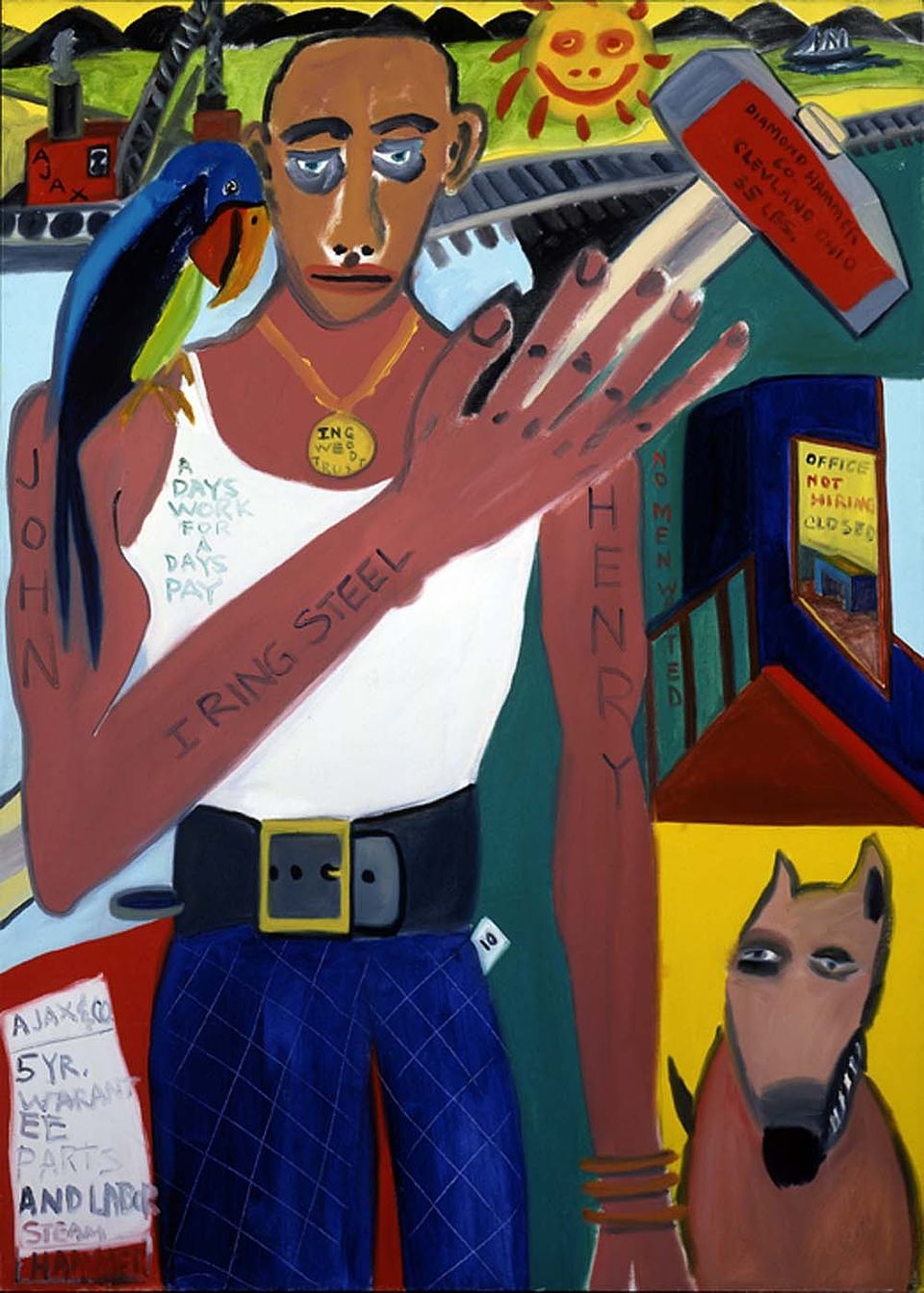Artwork Details
- Title
- Top of the Line (Steel)
- Artist
- Date
- 1992
- Location
- Not on view
- Dimensions
- 65 x 81 x 7 7⁄8 in. (165.2 x 205.7 x 20.1 cm)
- Credit Line
- Gift from the collection of Ron and June Shelp
- Mediums Description
- mixed media: enamel, unbraided canvas roping, and metal on plywood
- Classifications
- Subjects
- Figure group
- Abstract
- Figure — fragment — face
- Object Number
- 1993.47
- Research Notes
Artwork Description
African American Art: Harlem Renaissance, Civil Rights Era, and Beyond, 2012
This piece is Dial’s response to the social outbreak of the Los Angeles riots in 1992—among the largest civil disturbances in American history. Painted figures loot parts of air conditioners, cars, and other consumer goods. His frenzied brushstrokes convey the intensity of the mob. The title has a double meaning, referring to the quality of the stolen merchandise and the socioeconomic struggle for equality. "Steel" also plays on the word "steal," pointing to Dial's experience as a steelworker and the looting that took place during the riots.
"I make art that ain't speaking against nobody or for nobody either. Sometimes it be about what is wrong in life."
—Thornton Dial Sr.
Exhibition Label, Smithsonian American Art Museum, 2006















